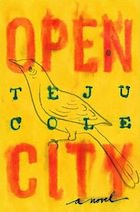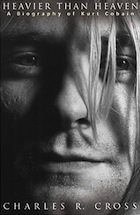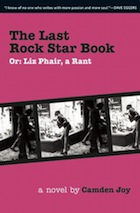 Veronica
Veronica
Mary Gaitskill
2005, Random House
There is a radio interview with Mary Gaitskill in which she says that people are like cans: so much substance, so much emotion, squashed into a container. Gaitskill is one of my favorite authors because she dives unabashedly into that substance and renders the inner lives of her characters with grace, intelligence, and truth. In her novel Veronica, the narrator, Alison—a former fashion model suffering from hepatitis C and a chronically aching arm—looks into her past. Alison was part of a generation whose ambition, we are told, was to live life as if it were music. Alison runs away to Paris as a teenager in the 1970s; that city sweeps her up and then spits her out into 1980s New York City, where she finds glitz, photo shoots, sex, wilting beauty, cruelty, and death. For a brief period, Alison is lavished with attention because she is beautiful, but she understands that such attention is as flimsy as a stack of fashion photographs. She makes one close friend, Veronica, a copy editor who is outrageous and hammy and somewhat of an embarrassment. Veronica is strong. Veronica also dies of AIDS. (The epidemic was just starting.) When I read the book, I guzzled the substance of the metaphorical can. I was submerged in the narrator’s psychology and carried between past and present, unwrapping memories in a dreamlike, fluid manner. This book is beautiful. —Anna M.
 The World According to Wonder
The World According to Wonder
Fenton Bailey and Randy Barbato
2013, World of Wonder
World of Wonder (WOW) is a production company that specializes in BIG, campy Technicolor affairs. Founders Fenton Bailey and Randy Barbato started out in 1991 with a short-lived show called Flaunt It! TV that was recorded live at Manhattan’s storied club Limelight, and through the club-kid connections they made there, they got the idea to direct the documentary Party Monster: The Shockumentary, which told the story of the drug-fueled murder of club kid Angel Menendez at the hands of Limelight producer Michael Alig; Bailey and Barbata later turned that story into a feature film, also called Party Monster, starring Macaulay Culkin and Seth Green. This bright, bombastic book chronicles WOW’s work, from Flaunt It! right up to today, when they’re executive producers on RuPaul’s Drag Race. It includes brand-new, beautiful conceptual portraits of everyone involved: Chloë in her all-lavender bathroom, Linda Evangelista eating a mini cupcake, and Natasha Lyonne looking excessively badass on a New York stoop. This book is a super-fun look at what a post-Warholian crack crew of TV addicts did with a little money and a lot of wigs. —Julianne
 Middlemarch
Middlemarch
George Eliot
1874, William Blackwood and Sons
OK, OK, OK, I know. This is a long book, and it’s dense, and you might be thinking, Emma, you fool, why would I want to read this for fun? Here’s why: Because sometimes it’s fun to use all of your brain cells on beautiful literature. This is my favorite novel of all time—it’s complicated and enormous, in terms of plot/number of characters (think Dickens, but without all the funny names) and in its sense of humanity. The heroine, Dorothea Brooke, is one of the best-written characters of all time. The plot is multifaceted and too complicated to explain in a single sentence, but here’s how it starts: Dorothea and her sister are flirting with a really cute boy who wants to marry Dorothea, but then she stuns the whole family by marrying this old and not-awesome intellectual, basically just because she thinks he’s smart and that she’ll learn a lot from him. It doesn’t go well. And that’s just one of the many, many story lines. A rich old guy dies and people fight over the will! People fall in and out of love! People die! Old ladies wear funny hats! It’s social commentary on par with Jane Austen, but with a much more complex worldview. It’s political, and romantic, and smart. I think Dorothea would have been well-served by having some Rookie in her life, so why don’t you help her out by bringing her into yours? —Emma S.
 Laura Lamont’s Life in Pictures
Laura Lamont’s Life in Pictures
Emma Straub
2012, Riverhead
I’ve always loved Hollywood’s Golden Age, and I’ve always loved sweeping fictional novels that tell the entire life story of a character as though she is the subject of a real biography—Rookie’s own Emma Straub has masterfully combined these two things in Laura Lamont’s Life in Pictures. The book starts in 1929 and follows Elsa Emerson from her childhood home and family theater company in Door County, Wisconsin, where she gets her first taste of the stage (and of personal tragedy), to Hollywood, where she is rewarded with fame and fortune. This is where Elsa becomes Laura Lamont, an Academy Award–winning actress—and that’s only the first half of the story! Elsa/Laura is such a real person—with identity issues, family drama, and a yearning for love that anyone can relate to—and Emma brings her to life so completely, you’ll feel like she’s in the room with you. You can read an excerpt of the book here, but trust me, you’ll want to devour the whole thing. —Stephanie
 The Particular Sadness of Lemon Cake
The Particular Sadness of Lemon Cake
Aimee Bender
2010, Anchor
This book is magical. I just finished it, and I already look forward to rereading it. The protagonist, nine-year-old Rose, wakes up on her birthday with the ability to taste emotion, which is such a far-out but simple premise that, when it’s rendered in Aimee Bender’s emotional, funny, conversational prose, you believe it’s actually possible. Rose is a fantastic character—she’s very much a lost soul looking for her place in a family full of dynamic and detached people. She crushes on her older brother’s friend, worries about the despair she can taste in her mother’s cakes and pies, and tries to figure out how to deal with a weird skill that gets her unwanted attention, when the attention she really craves—from the charismatic people in her orbit—remains out of reach. Is their magnetism going to rub off on her, or will her secret ability leave her adrift? —Danielle
 Open City
Open City
Teju Cole
2011, Random House
One of my favorite things to do is walk aimlessly through a city. Reading this novel is like hitching a ride in someone else’s head while they do exactly that. The narrator, Julius, is a Nigerian-born medical student living in Manhattan. As he wanders through the streets, parks, and museums, his encounters prompt a free flow of thoughts about literature, science, history, politics, race, identity, and his own past. I know that doesn’t sound like a story with inherent drama, but somehow this book is so much more than an intellectual ramble; it’s a meditation on what we choose to recognize and ignore in the world, as well as in ourselves. —Rose
 Heavier Than Heaven: A Biography of Kurt Cobain
Heavier Than Heaven: A Biography of Kurt Cobain
Charles R. Cross
2001, Hyperion
Nirvana had a huge influence on my life. Their music helped me discover my own way as a writer, and Kurt’s suicide, which happened when I was a depressed high-school freshman, shook me hard. Ever since, I’ve felt this need to understand his life, so I’ve read pretty much every book about him that I could find. Heavier Than Heaven is the best by far. For one thing, Charles Cross was there in Seattle, writing and editing the music magazine The Rocket during the heyday of grunge. Also, Courtney Love gave Cross access to Kurt Cobain’s journals, so in addition to the scores of interviews Cross did, he was in touch with Kurt’s innermost thoughts. And finally, it reads like a novel. It’s so beautifully written that I’ve used excerpts of it to teach creative writing. The detail Cross manages to get on paper when describing Kurt’s overdose after the band’s Saturday Night Live appearance, as well as his final moments, are vivid enough to bring tears to your eyes. If you’re a Nirvana fan, this book will give you a deeper understanding of Kurt’s life and music. If you’re fascinated with fame, you’ll gain perspective on how artists grapple with wanting-but-not-wanting attention. And if you struggle with depression, you might find some insight into yourself. —Stephanie
 The Last Rock Star Book, or: Liz Phair, a Rant
The Last Rock Star Book, or: Liz Phair, a Rant
Camden Joy
1998, Verse Chorus
In the mid-1990s, the novelist/performance artist/hellion Camden Joy plastered posters all over New York City protesting the CMJ conference—he basically thought music conferences were destroying punk sensibilities, and that the music industry was killing creativity. Joy had a kinetic, restless way of being that comes through in this weird and fascinating novel, in which the narrator—commissioned to write a biography of Whip-Smart-era Liz Phair—gets lost in a mind-spiral of rock history and becomes a little stalker-y. He brings together Phair, Brian Jones of the Rolling Stones, and an iconic photo of the French student riots in May 1968 in a surrealist, frantic first-person tale that, for me, has the same freaked-out paranoia as certain Philip K. Dick books. (You can now find Joy writing best-selling books about baseball under his real name, Tom Adelman.) —Julianne
 And I Don’t Want to Live This Life: A Mother’s Story of Her Daughter’s Murder
And I Don’t Want to Live This Life: A Mother’s Story of Her Daughter’s Murder
Deborah Spungen
1983, Ballantine
As a teenager, my major fascination with Sid and Nancy shaped me in some not-so-good ways. I had sympathy for Nancy Spungen, thinking that she was probably cast as a villain (à la Yoko Ono and Courtney Love) for dating a famous musician (Sid Vicious played bass for the Sex Pistols). The difference, of course, was that Yoko and Courtney were artists in their own right, and Nancy, from what I understand, was an attention-seeking scenester and a drug addict. But she was also a passionate, smart music fan and a fiercely willful force of nature, and I wanted to know what made her tick. So did her mother, Deborah—in this book Deborah does her best to understand her oldest daughter, who was murdered by her boyfriend when she was just 20 years old. According to Deborah, Nancy wouldn’t stop crying as an infant, was diagnosed with schizophrenia at 15, and terrorized her family to the point that her death was almost a relief. When I first read this book, I kind of wanted to tell Deborah, “Duh, you let a doctor put your baby on liquid barbiturates, of course she grew up to have a drug problem!” But with each reread, I saw more of the complexities that Deborah faced during Nancy’s life and following her death. She hated Sid for Nancy’s murder, but she also believed that he really loved her. The celebrity-tragedy angle makes this a made-for-TV movie, but with real emotional depth. —Stephanie
 Edie: American Girl
Edie: American Girl
Jean Stein, edited by George Plimpton
1982, Grove Press
In a way, Edie Sedgwick foreshadowed the reality-TV and tabloid stars of today: She was famous, but not for doing anything in particular besides just being Edie Sedgwick. She modeled a little, and acted in a bunch of Andy Warhol’s weirdo art movies, but she was mostly known for being a beautiful, stylish, glamorous, and wild It Girl who hung out at Andy Warhol’s Factory in the 1960s. During her short life—she died of a drug overdose at the age of 28—she was simultaneously idolized for her trailblazing personal style (Patti Smith says in this book that a picture of Edie in Vogue pretty much inspired her to move to New York) and vilified for her nihilistic, hedonistic lifestyle. Here Edie’s life story is told through conversations with those who knew her or were influenced by her, including family members, friends, rivals, and Mr. Warhol himself, who was interviewed for the book before his death in 1987. Each person’s perspective on Edie buffs away a little bit of the glare of her stardom so we can finally see her as a real person with real troubles that began during her privileged childhood in an abusive home. The book is a snapshot of a bizarre and glittery counterculture; an attempt to capture all the multitudes of a single person; and a still-relevant meditation on what it means to be a celebrity. —Anna F.
 The Andy Warhol Diaries
The Andy Warhol Diaries
Pat Hackett, editor
1989, Grand Central Publishing
I am super nosy and love reading about other people’s lives, but traditional memoirs can be such a bummer because you can just feel the author trying to make their life seem worth reading about, spotlighting and exaggerating stuff that makes them look noble or smart, while quietly drawing the shades on the not-so-flattering stuff. And you can feel it when they try to force meaning onto random events, cramming the messy arbitrariness of real life into a neat narrative arc where each thing leads to the next to the next, creating an “explanation” for why they, the author, are so great. That’s why I love stuff like Jon Huck’s Breakfast, where you learn a surprising amount about people just by looking at what they eat for breakfast; and an installation I once saw where the artist—I wish I could remember his name—saved the receipts from every single thing he bought over the course of I think a year and taped them all over the walls of a gallery; and this book, The Andy Warhol Diaries, which started out as a way for Warhol to keep track of how much money he was spending each day. Basically, I love anything where someone’s story is told through the cold hard facts, by obsessively recording details like what they spent, ate, or wore each and every day—the kinds of minutiae that seem banal on their own, but that when put together form patterns that can reveal so much about the person. This book was edited by Warhol’s then-secretary, Pat Hackett, to whom Warhol would dictate his daily expenditures so that Hackett could transcribe them. Soon the artist was adding all kinds of information to these daily reports—what happened and what he remembered and what those events and memories made him think about—and Hackett recorded it all. The stories get juicier and name-droppier over time, but keep an eye on those simple daily dollar amounts. Those are your real window into the priorities, thoughts, habits, obsessions, and life-as-it-was-lived of an artist who was famous for his inscrutability. We learn, for example, that Warhol was a generous tipper (generally around 30%), that he thrived on routine and predictability, that he took cabs everywhere, that he visited friends on almost a daily basis and if he was out with other people he usually paid for everything, that he consumed magazines at an alarming rate, that he regularly volunteered at a homeless shelter, that he went to church. This Warhol is kind, humble, obsessive, devout, generous—so different from the way he is still often portrayed, as a kind of caricature of an arrogant, unfeeling downtown art snob. It makes me wonder (with a shudder) what story would emerge from a record of my own spending or eating or what have you. I suspect it would be less flattering, and more true, than any story I might tell about myself. —Anaheed
 17 & Gone
17 & Gone
Nova Ren Suma
2013, Dutton
I was so in love with Nova Ren Suma’s book Imaginary Girls that I had 17 & Gone on preorder forever, and I dropped everything to read it as soon as it arrived. I was sucked in from the very first line: “Girls go missing every day.” Two pages later, there’s a flier for a missing Abigail Sinclair. These are the kinds of notices we might see all the time and ignore, but Abigail’s immediately grabs the attention of the main character, Lauren. Abigail was 17 when she disappeared from the summer camp in Lauren’s hometown—she is thought to have run away, but Lauren knows otherwise because Abby, in death, comes to her: Lauren feels Abby’s presence, sees her in mirrors, dreams about her in a spooky old house. Then she starts to meet the other girls who went missing at the age of 17, and Lauren, who will soon turn 17 herself, begins to unravel. I was compelled by this story’s mystery, and by the end I was totally blown away by how Suma manages weave together all of the many ways that teenage girls can disappear. —Stephanie ♦

